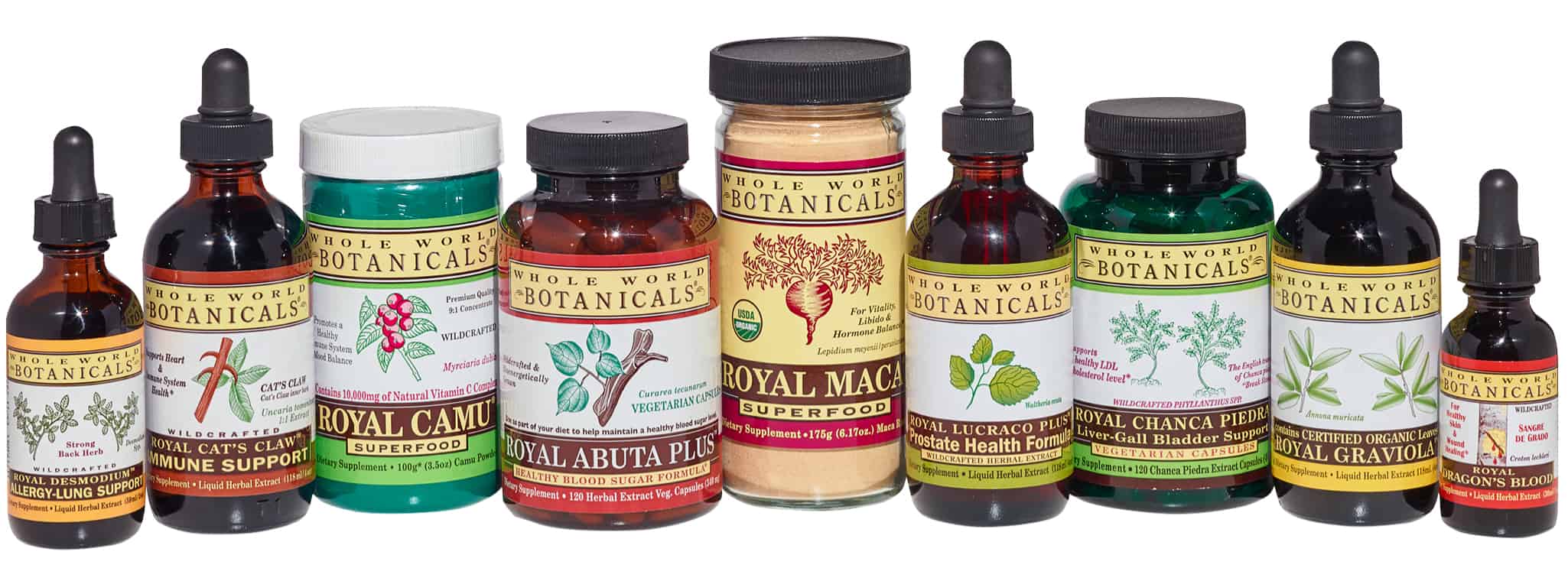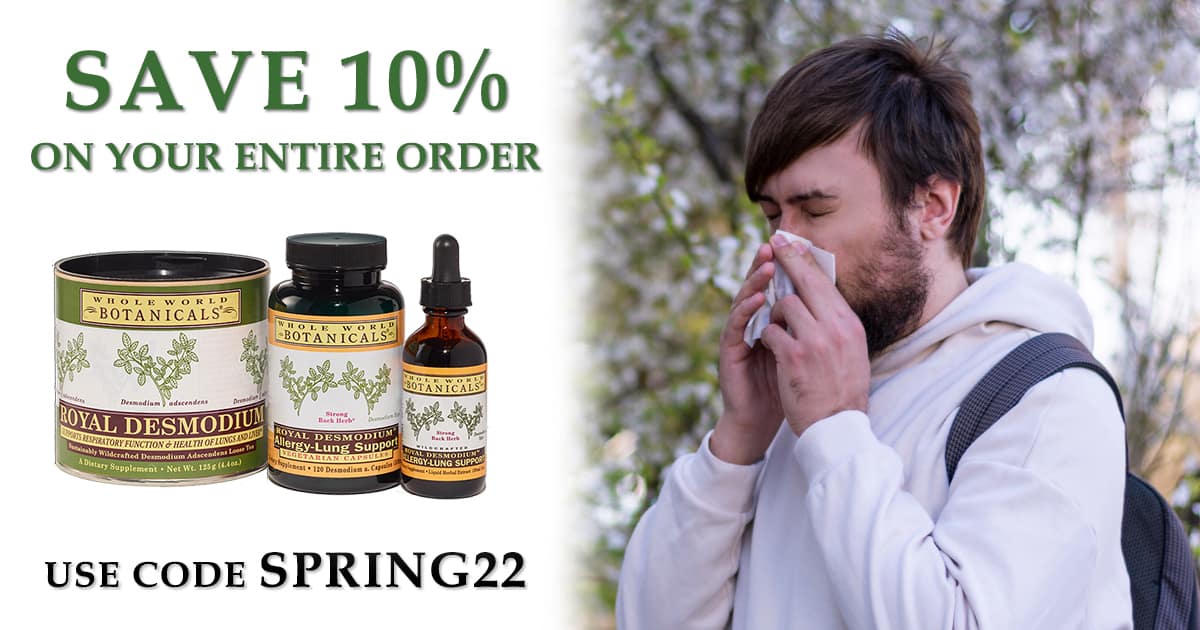Interview with Hugo Malaspina, MD on the therapeutic use of Maca
On May 20, 1997, Dr. Hugo Malaspina, who practiced for years as a neurologist before beginning a practice based on complementary medicine involving the use of herbs, agreed to be interviewed by Viana Muller, Ph.D., Founder, Whole World Botanicals on his use of the herb maca(tm) (Lepidiium meyenii/peruvianum) in his practice.
VM: How did you first hear about maca?
Dr M: The first contact I had with maca was seven years ago. There was a circle of elderly gentlemen, a bit playful, who wanted to maintain their sexual activity. Well, one of them had heard about the properties of maca, and so at their social get-togethers, they began to consume maca together. Within this circle was an 88 year-old gentleman, who had a sexual relationship once a week, and he was able to perform. And they all had their sexual relationships going well, which was notable since they were all above 70 years in age.
VM: You have told me that you use maca in your practice for perimenopausal and postmenopausal women. What are the benefits of this?
Dr M: I can tell you the following: the women who use maca are not going to have peri-menopausal symptoms. I have seen this in many patients, but, of course, that is not enough. What is needed is a double-blind study with a control group. But I am absolutely certain that maca can substitute perfectly for nature herself-or, rather, not substitute but continue nature, because the mechanism of action is simple. Because it is not acting from outside-from introducing something into the body from outside-that is, introducing hormones into the body. In some cases, this may be necessary, but in general-no. It is only necessary to see to it that the ovaries do not completely atrophy. So that the ovaries continue to produce more than the minimum amount of estrogen necessary, in order that we don’t run into problems later. And if the ovaries have been removed from the body, so that the adrenal glands can be in the condition to continue to produce the minimum quantity of estrogen necessary to avoid problems.
VM: Oh, it works on women who’ve had hysterectomies? That’s important, because I’ve read that more than one million women in the U.S. have had complete hysterectomies-and they no longer have their ovaries. It’s really an abuse of the doctors to so regularly remove a woman’s ovaries.
Dr M: Yes, that’s true. And then it becomes necessary to use hormone replacement therapy, which carried its own risks,and its own economic benefits (for the pharmaceutical companies)! That’s why it’s difficult to find a scientific group to finance a study of the use of maca in place of hormone replacement therapy. Because the study would kill the goose that lays the golden eggs.
There are different medicinal plants that work in different ways on the ovaries-that stimulate them. Maca is one of them, but we should use the word “regulate” the ovarian function instead of “stimulate.” Maca regulates the organs of internal secretion, such as the pituitary, the adrenal glands, the pancreas, etc.VM: What scientific information is available on maca?
Dr M: In addition to the information we have from Dr. Chacon, there has also been scientific research from some North American and English scientist who were studying all of the pathologies of people living at high altitudes-that is, about 4,000 meters. These are precisely the people who cultivate maca because this is where maca is grown. Well, they observed that the women there had no post-menopausal problems. Something that they thought was quite exceptional.
VM: What types of problems
Dr M: The typical problems of hot flashes, depression, osteoporosis, cardiac circulatory problems, etc.-all of the problems are much more evident now than in previous generations, because after menopause women use to live maybe 15 or 20 years more. Now they regularly live another 25 or 30 years more.
VM: Do you know how much maca these women were eating? If you translate what they were eating into dry powdered maca, for example, how many teaspoons were they eating?
Dr M: Well, one small dried plant root equals about one teaspoon of dried powdered root. Let’s say, about one teaspoon 3 times a day. For perimenopausal women-that is, women who are anovulatory. For these women, to use hormones derived from an outside source causes their ovaries to effectively atrophy. Because later they stop producing hormones. The fact that there is a sufficient level of hormones in the blood sends a message to the pituitary and the hypothalamus indicating that there is a sufficient quantity of hormones in the body, and for that reason they can stop producing them. And then when menopause arrives, there is almost a complete atrophy of the ovaries, which means that there is practically an absence of estrogen in the body-which then causes all of these other symptoms. Because the body requires a minimum amount of estrogen and progesterone in the body in order to maintain a functional equilibrium in the body. So, everything has stopped. Then the woman needs a continuous hormone replacement therapy since her own body no longer puts out its own hormones. For this reason, we are giving maca to women who are perimenopausal or who are just starting menopause. Maca from what we have observed of its effects, by the results we have obtained, has a type of stimulating effect on the ovaries- the minimum quantity that is necessary.
VM: From the experience of some of the postmenopausal women in the U.S. who are using maca, after taking maca, one or two teaspoons a day for several weeks-they begin to feel some tenderness in their breasts. Why is that? How do you respond to such a situation?
Dr M: Yes, this can happen. Some women notice changes in their breasts using maca, others don’t. Generally, what we have found is that women who have had a tendency to have cystic breasts or who have previously had some type of pathology–but some kind of dysfunction in this aspect. Nevertheless, we have not had any reports of any kind of breast cancer resulting in women who are using maca. It appears that the estrogenic effects of maca are not of the same type as the estrogenic problems which can unleash a series of events leading to breast cancer. What should these women do who have the sore breasts — cut back on the maca?
Dr M: Yes, also it would be advisable for them to have a periodic check of their hormone levels to make sure that their estrogen and progesterone levels are at the normal level and in balance. But often these changes in the breasts are temporary and they disappear in time.
VM: For how long does the pain usually last?
Dr. M: For about a month, or a month and a half at the longest, in the great majority of cases. For that reason, we don’t interrupt their treatment for this reason. We may reduce the dosage though. We advise using maca on an off-and-on basis, [6 days on, one day off] once their symptoms have stabilized [after 2 or 3 months of use].
VM: You mentioned to me that you consider maca to be an effective-and superior-substitute for a pharmaceutical hormone replacement therapy. Can you give me a concrete example from your practice?
Dr M: Yes, we prescribe between 1,200 and 3,600 milligrams of precooked, organic maca (3-8 capsules) daily for menopausal and postmenopausal women and have had very good results. For example, I saw someone this morning, a 49 year old woman who had a hysterectomy eight years ago, although they saved her ovaries. She had borne three children. Her last menstruation was eight years ago. Her last Pap smear was one month ago. She had a moderate bone loss, according to the results of a bone density test which was performed. A tendency to get depressed, cold feet, some constipation, hot flashes and tachycardia. Her medical history included in addition to the hysterectomy, an appendectomy, tonsillectomy, and she had breast implants-for which reasons, it was impossible for her to use hormone replacement therapy. She was taking calcium, Vitamin C and Vitamin E. She started using maca three months ago, and her depression cleared up, her constipation has cleared up, and she no longer has the hot flashes. Her circulatory symptoms have improved also. Here is someone who had no choice-she couldn’t have HRT because of the breast implants, yet she needed a higher hormone level to help with the bone loss, the hot flashes and the depression.
VM: Have you used maca successfully with post-menopausal women who have had complete hysterectomies?
Dr M: Yes. I had one patient who had her ovaries removed who started using HRT. She had had a bone scan and showed some bone loss, so it was necessary to raise her estrogen level. But she didn’t feel well on HRT and so she stopped it. When she came to me she had a blood serum estradiol level of 15-very low, and she was laving hot flashes. We started her on maca and we re-tested her estradiol level two months later. this time her level was 75-quite an adequate level for a postmenopausal woman.
VM: What is the average level for a postmenopausal woman, untreated?
Dr M: O-30 blood serum estradiol level. Thirty is the absolute minimum that a woman needs to avoid symptoms but 60-75 is a more adequate level.





















